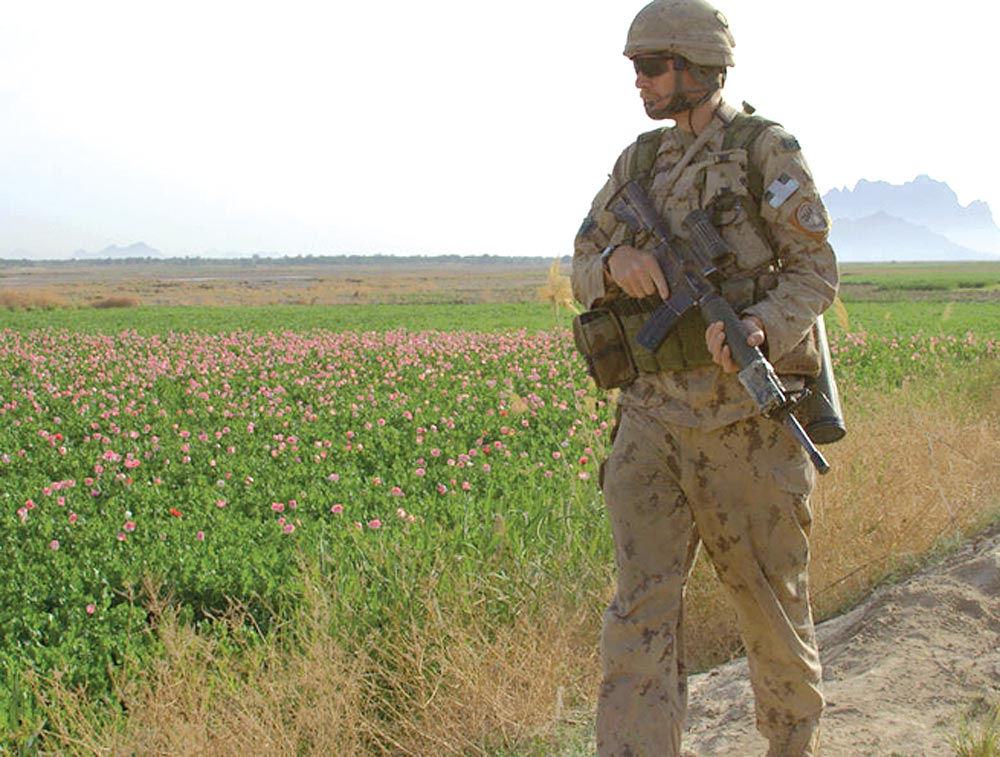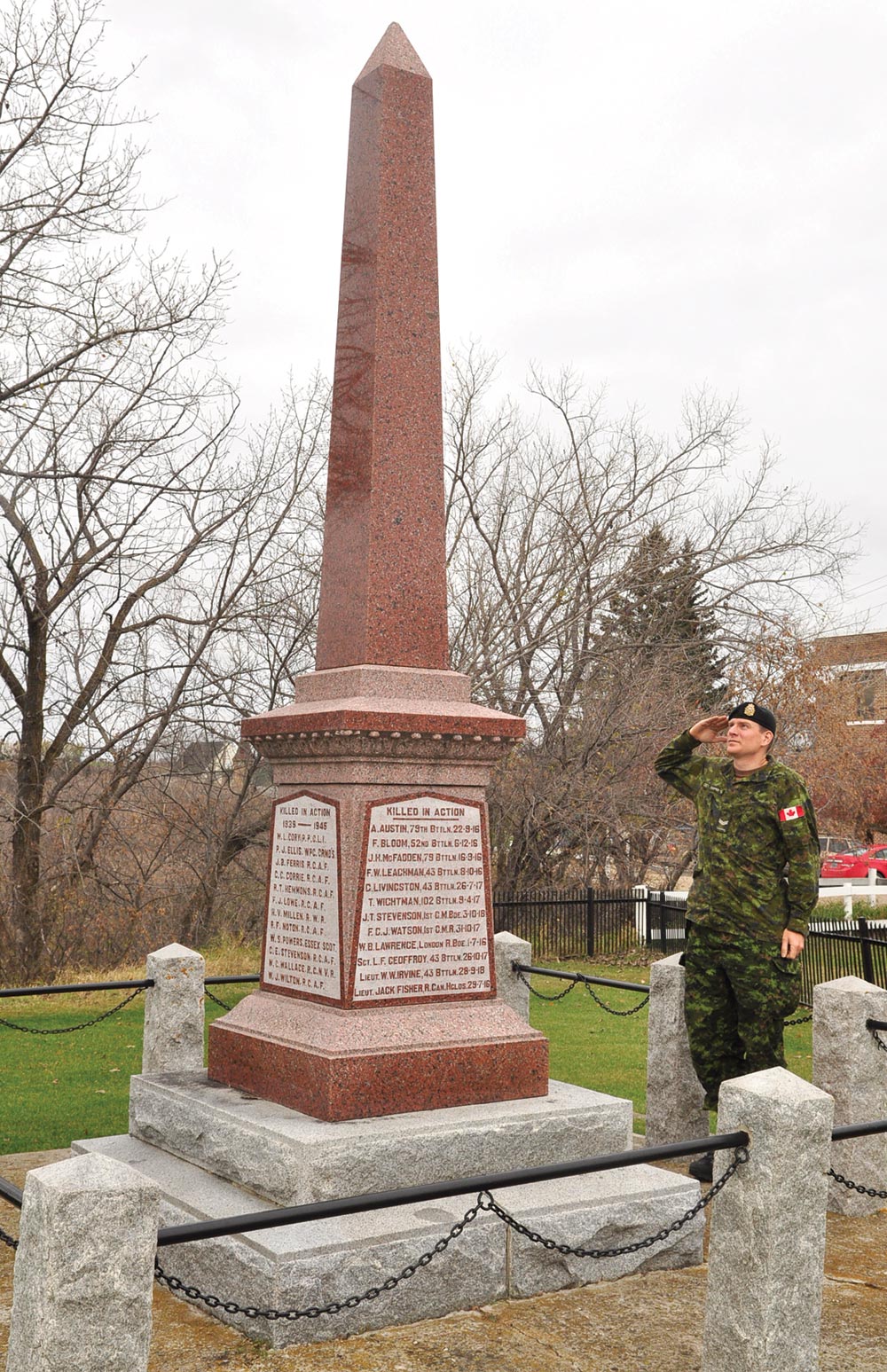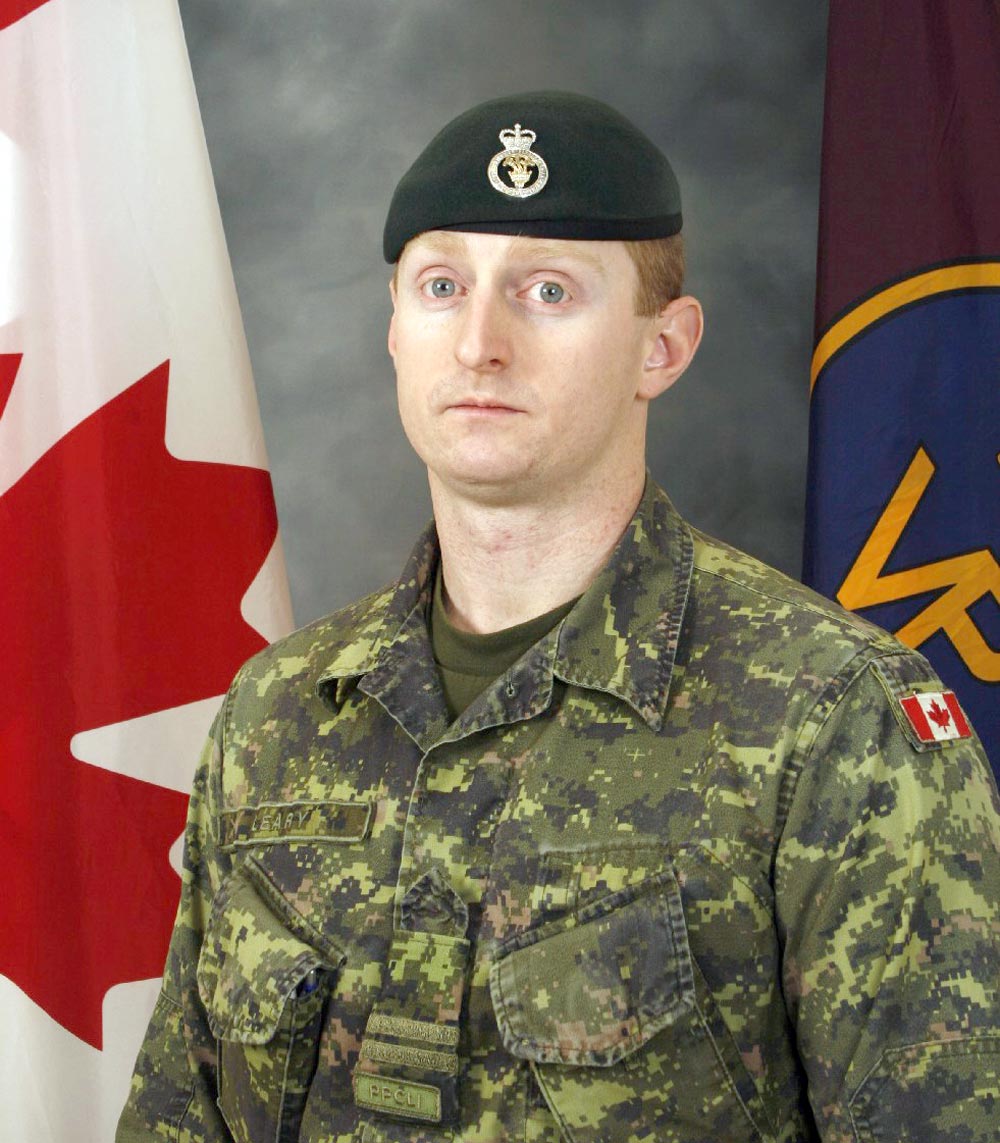

MCpl Bryce Cooper
Stag Special
Before spending the summer of 2008 in southern Afghanistan Nov. 11 had a very different meaning for me.
At the end of May, I was with 6 Platoon (6Pl) when we took over Combat Outpost (COP) Talukan from 4Pl. Talukan was the third of four such outposts — Haji, Zangabad, Talukan and Mushan. The COPs were arranged east to west, south of the Argandab River in the Khandahar provinces Panjwai district.
Each COP was garrisoned by some Canadians, depending on the situation and the size of the COP, a section or a platoon. Part of the garrison was made up of Afghan National Army (ANA). In the case of Talukan, a platoon of Canadians made up the garrison.
COP Talukan was surrounded by wide green fields. Good clear arcs of fire. The closest building was a grape drying hut several hundred metres away.
Grape drying huts are large roofless buildings with mud walls and slits cut in them. Although in theory for drying grapes to make raisins all I remember them being used for was defensive positions for Taliban fighters.
The slits could be shot through by small arms and the dark interiors made it impossible to see movement inside. The walls were often durable enough to withstand multiple 25mm canon hits.
To the south some jagged ridges rose out of the arid landscape. East and west if you were standing on one of the two towers on a clear day you could see clay mounds in the distance that looked like mud castles made by a very young child.
All around there were narrow canals flanked by deliberate trees and conspicuously green fields. A short distance from any canals there was only dusty beige desert.
The fields were mostly growing grapes although there were marijuana fields and the occasional opium field. Instead of the tresses we build for grapes they use mud mounds — sometimes several feet high to grow their vines on. Grape fields also provided good shelter for Taliban.
Between the fields and roads and around the compounds that served as houses mud walls stood in defence. Everything felt a little claustrophobic between the walls. Roads seemed narrow, fields seemed small.
Unseen enemies lurked undetectable behind the walls as well as in the grape fields and grape drying huts.
The fighting was seasonal in Afghanistan largely due to the relationship with the drug trade. Growers would harvest their crop of opium by mid-May, refine it to heroin, and move it to markets.
The Taliban would benefit from the drug trade and use the influx of money to buy weapons and ammo. From May to September the direct attacks by insurgent were at their highest. By fall the money would run low and so would the insurgent resources for direct attacks.
For Canadians fighting in Afghanistan, Improvised Explosive Devices (IEDs) posed a constant threat regardless of the season. Direct attacks with small arms, technical vehicles and recoilless rifles happened in the summer.
When 6Pl occupied COP Talucan in June, troops were in combat during patrols of the area on a weekly basis. In actuality, anytime a patrol went south into the built-up area where the population was centred they were likely to end up in a gunfight with Taliban fighters.
When we moved in and took up the routine of tower shifts and patrols there was a sense of foreboding that came over the platoon. Everyone was aware we were in a perilous situation.
A section commander from 4Pl had already been repatriated because of injuries he sustained at Talukan. While patrolling south of the COP his platoon was attacked by a child clad in an explosive vest. The vest was remote detonated by a man hiding at a safe distance. Debris including ball bearings showered the patrol.
No Canadians died, but there were real injuries both physical and, because of the nature of the attack, psychological.
A few days after arriving in Talukan on June 3 our worst fears were realized. The patrol I was on was ambushed.
The ambush faltered when a Taliban fighter’s RPG 7 failed to fire. The Taliban was killed as the patrol fought through the ambush and attempted to develop an objective for an airstrike or an artillery barrage.
The patrol remained in place taking cover against the banks of a canal as well as the surrounding walls and trees. The lifeless Taliban floated face down below us.
After several attempts to call close air support (CAS) and artillery, our patrol prepared to move back to the COP.
The ANA soldiers on patrol with us were attempting to drag the body of the dead Taliban out of the canal in order to deny him an appropriate burial. 2PPCLI Capt Richard Leary told them to stop what they were doing and go back to the COP. This was the last time I would see 32-year-old Capt Leary give an order.
While we were at the canal Taliban fighters had staged an ambush between the patrol and the COP. I was near the front of the patrol running a gauntlet of gunfire. The COP assisted in covering our withdrawal with 60mm mortars and the LAV III’s 25mm canons.
We were almost back at the COP, I turned a 90 degree corner and hid behind a wall. I was waiting for the rest of the patrol to catch up. A LAV III shot directly over my head. The muzzle blast was deafening and my ears were ringing, but I still heard someone yell to me that Call Sign 23 was down.
In the midst of the battle evacuating the casualty to the COP was very difficult. Luckily, a brave soldier from 12e RBC assigned to do electronic recon at Talukan made a daring rescue. He took a Ford Ranger belonging to the ANA and drove it out into the battle where Capt Leary was loaded in the back.
Although he never regained consciousness his vital signs remained until shortly before his medevac helicopter (Blackhawk dust-off call sign) arrived. I was already back up on a tower after the patrol when I heard the medic and TCCC start CPR below me — meaning he no longer had vital signs.
After the death of the platoon commander I left Afghanistan to go on leave. When I came back it was obvious how much we had lost in Talukan.
Capt Leary had taken the time to learn the people under his command. He was very personable. He would let his subordinates know what he thought in given situations as well.
If there was something to complain about he didn’t wait to overhear it from the troops. Capt Leary would be the first to gripe and the loudest.
Without him the platoon seemed like it had gone sour. There were constant complaints about leadership and tasks that had not been there before.
Although challenging before he died, the experience I had on tour was significantly worse after he died. I waited for it to be over. We counted days until the end starting at more than 50.
Before the summer of 2008 on the 11th of November, I would read about an individual soldier who had died in one of the World Wars or Korea so his personal legacy would be remembered. I would bow my head in thanks to the unnamed masses.
Since Talukan, Remembrance Day has been much more personal to me.
This Remembrance Day I will be remembering MCpl Erin Doyle, who wouldn’t care what you thought about him, but always put the needs of his men before himself. He died at Haji.
I will remember 24-year-old Pte Terry Street of Surrey, BC, who I enrolled with at CFRC Vancouver. He died in an IED blast on April 4, 2008 near Zangabad.
I will especially remember Capt Leary, who died on June 3, 2008 at Talukan. This was a 2PPCLI soldier who led from the front.
Lest We Forget!
MCpl Bryce Cooper is a military photographer with 1 Cdn Air Div HQ/Canadian NORAD Region Public Affairs

MCpl Bryce Cooper has strong memories from his deployments to the Afghan War, where he lost comrades on the battlefield fighting the Taliban. He reflected on his time with 2PPCLI before remustering after a decade and switching from infantry to become a military photographer. Capt Kevin Leary was one comrade who he thinks of often, especially on Remembrance Day.

